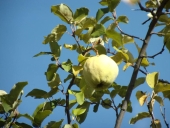
 8
8





 2
2




List of Bryant RedHawk's Epic Soil Series Threads We love visitors, that's why we live in a secluded cabin deep in the woods. "Buzzard's Roost (Asnikiye Heca) Farm." Promoting permaculture to save our planet.
 1
1




 4
4
























List of Bryant RedHawk's Epic Soil Series Threads We love visitors, that's why we live in a secluded cabin deep in the woods. "Buzzard's Roost (Asnikiye Heca) Farm." Promoting permaculture to save our planet.




A human being should be able to change a diaper, plan an invasion, butcher a hog, conn a ship, design a building, write a sonnet, balance accounts, build a wall, set a bone, comfort the dying, take orders, give orders, cooperate, act alone, solve equations, analyze a new problem, pitch manure, program a computer, cook a tasty meal, fight efficiently, die gallantly. Specialization is for insects.
-Robert A. Heinlein
 4
4








Chris Kott wrote:I don't know if this is true for all cold-hardy species, but I have noticed that in a lot of plant groups, purple indicates an adaptation to the cold, or sometimes dry cold. I have found this to be the case in tomatoes, brassicas, and cannabis. I would love to know, incidentally, if there's a biochemical reason for it.
.....
-CK

| I agree. Here's the link: http://stoves2.com |


